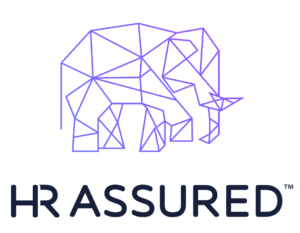It’s Festivus, but the Great Resignation looms
December 22, 2021From ongoing lockdowns resulting in business closures and employee stand-downs leaving people out of work to the introduction of vaccine mandates, almost all businesses have faced considerable challenges in 2021.
As we head into the festive season, now is the time to reflect on these challenges, celebrate the victories whether few or many and begin considering other small yet no less impactful ways to recognise the effort of your employees, improve job satisfaction, and stave off the potential impacts of the Great Resignation.
In this article, I explain what the Great Resignation is, the impacts it’s likely to have on businesses and what employers can do to stave it off.
What is the Great Resignation?
Since April 2021, more than 15 million workers across the United States have quit their jobs because of the COVID-19 pandemic, prompting a phenomenon referred to as the ‘Great Resignation’, which sees mass resignations during periods of upheaval and crisis.
Human Relations experts began to study this about the pandemic and found 25 per cent of women were contemplating leaving the workforce entirely, whilst 40 per cent of workers across the globe were considering a career change.
And this wave of resignations is heading to Australia soon.
According to a recent survey conducted by PwC and Deloitte, almost 40 per cent of the Australian workforce are intending to leave their current jobs in search of a fresh start in the next 12 months or because they wish to retain the flexibilities they’ve had during the pandemic.
This surge comes after the lowest rates of labour mobility were exhibited in 2020-21 since tracking of this data by the Australian Bureau of Statistics began in 1972.
What can be done to stave off resignations?
Whilst employers can’t prevent their employees from seeking alternative work, they can improve working conditions and job satisfaction to reduce the expected haemorrhaging of employees.
Now is the time for businesses to consider and take steps to retain their existing talent and attract new talent where necessary. Surveys have shown that employees rank flexibility, work-life balance, mental health, well-being, and earning capacity as being the most important considerations concerning their work.
Workplace flexibility
Before the pandemic, employers had a stronger basis to refuse flexibility arrangements as there had been no precedent of an entire workforce operating remotely. Now, we’ve seen businesses adapt to fast-moving changes to working environments, and employees now know a work-life balance is possible. This makes it more difficult to reasonably refuse requests for these types of working arrangements to continue.
Whether an employee has young children, a disability that makes travelling to work daily difficult, or simply likes the occasional comfort of working from home, employees are favouring flexibility options more than ever. So, as businesses return to on-site operations, they’ll need to contend with employees who’ve grown accustomed to working from home.
Employers should consider continuing a staged return to on-site work, as a zero to one hundred approach is likely to leave employees feeling overwhelmed, unsatisfied with their working conditions and more likely to seek alternative employment that allows for such flexibility.
Training and development plans in 2022
One of the most important parts of keeping good employees is actively implementing retention strategies. While part of this extends to offering benefits such as flexibility and having a good workplace culture, offering your staff training and development opportunities and recognising success are effective tools as well.
The benefits of continuing training and development are abundant: not only does this allow your staff to stay up to date with best industry practices, but it allows them to improve their skills and progress in their careers. This means a more experienced workforce that clients will return to and refer their friends and family.
Training and development can help your employees see a future in your business too, one that you are investing in beyond merely paying them for services rendered.
It’s beneficial to think of not only the industry skills your employees need to work in the practice but professional skills that are needed in any workplace. While your staff may be trained in a specific field to get to where they are today, consider providing development in people management, conflict resolution and cultural competency – training across these areas can pay dividends in the way your employees handle situations with clients and their colleagues and reduce your costs of managing claims or disputes later down the track.
While training courses may often bear an upfront expense, hiring new staff if current employees resign due to lack of development opportunities or for feeling undervalued, may come at an even greater cost.
Where to from here?
It’s not just about the tangible benefits you provide your employees at this time by way of higher salaries; the intangible can be just as important for employee retention purposes. Whether you continue to promote flexible working arrangements, offer training and development courses, create a mentorship program, or just give employees positive feedback on how they’ve achieved so much, it all adds up.
Improving employee engagement and morale after the past few years with the pandemic beating us down may be just the thing needed to keep your most valued employees happy for years to come, and stave off the Great Resignation.
If you have questions about what the Great Resignation means for you, please contact the team at FCB.


























